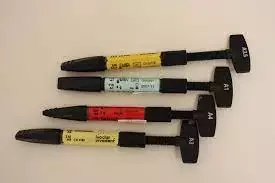- Home
- Medical news & Guidelines
- Anesthesiology
- Cardiology and CTVS
- Critical Care
- Dentistry
- Dermatology
- Diabetes and Endocrinology
- ENT
- Gastroenterology
- Medicine
- Nephrology
- Neurology
- Obstretics-Gynaecology
- Oncology
- Ophthalmology
- Orthopaedics
- Pediatrics-Neonatology
- Psychiatry
- Pulmonology
- Radiology
- Surgery
- Urology
- Laboratory Medicine
- Diet
- Nursing
- Paramedical
- Physiotherapy
- Health news
- Fact Check
- Bone Health Fact Check
- Brain Health Fact Check
- Cancer Related Fact Check
- Child Care Fact Check
- Dental and oral health fact check
- Diabetes and metabolic health fact check
- Diet and Nutrition Fact Check
- Eye and ENT Care Fact Check
- Fitness fact check
- Gut health fact check
- Heart health fact check
- Kidney health fact check
- Medical education fact check
- Men's health fact check
- Respiratory fact check
- Skin and hair care fact check
- Vaccine and Immunization fact check
- Women's health fact check
- AYUSH
- State News
- Andaman and Nicobar Islands
- Andhra Pradesh
- Arunachal Pradesh
- Assam
- Bihar
- Chandigarh
- Chattisgarh
- Dadra and Nagar Haveli
- Daman and Diu
- Delhi
- Goa
- Gujarat
- Haryana
- Himachal Pradesh
- Jammu & Kashmir
- Jharkhand
- Karnataka
- Kerala
- Ladakh
- Lakshadweep
- Madhya Pradesh
- Maharashtra
- Manipur
- Meghalaya
- Mizoram
- Nagaland
- Odisha
- Puducherry
- Punjab
- Rajasthan
- Sikkim
- Tamil Nadu
- Telangana
- Tripura
- Uttar Pradesh
- Uttrakhand
- West Bengal
- Medical Education
- Industry
Light-cured composite resins found to be slightly cytotoxic finds Study

Resin-based materials that are used in dentistry should be harmless to oral tissues, so they should not contain any leachable toxic and diffusible substances that can cause some side effects.
Light-cured composite resins are slightly cytotoxic, according to a recent study published in the Clinical and Experimental Dental Research.
A group of researchers performed a study to determine the cytotoxicity of light-cured composite resins (Clearfil ES-2, Clearfil ES Flow, Filtek Supreme XTE, Grengloo, Blugloo, Transbond XT, and Transbond LR) then to assess leachable components in contact with human gingival fibroblasts (GFs) and to quantity detected bisphenol A (BPA).
Light-cured composite resin discs were immersed for 24 hours in gingival fibroblastic medium (n = 3 for each product) and in control medium (n = 2 for each product) contained in the plate. Cytotoxicity of the products (n = 95) was determined by the measure of cell viability using MTT assay after reading the optical densities of the plates. The analysis of leachable components was done by gas phase chromatography and mass spectrometry (GC–MS) and detected BPA was quantified. The limit of quantification was 0.01 μg/mL. Statistical analyses were performed by using IBM SPSS Statistics 20 and Kruskal–Wallis and Mann–Whitney U-tests were applied.
The Results of the study are as follows:
- Cell viabilities were between 85 and 90%.
- Many chemical compounds including trimethylene glycol dimethacrylate (TEGDMA) and BPA were identified.
- The average concentrations were 0.67 μg/mL ± 0.84 in the control medium and 0.73 μg/mL ± 1.05 in the fibroblastic medium.
- Filtek Supreme XTE presented the highest concentration of BPA with 2.16 μg/mL ± 0.65 and Clearfil ES Flow presented the lowest with 0.25 μg/mL ± 0.35.
- No BPA was detected with Transbond XT and Transbond LR. Clearfil ES Flow, Filtek Supreme XTE, Grengloo and Transbond LR presented residual TEGDMA.
Thus, the researchers concluded that light-cured composite resins are slightly cytotoxic opposite GFs and release many components including BPA and TEGDMA. Clinical precautions should be taken to decrease the release of these monomers.
Reference:
Cytotoxicity evaluation of dental and orthodontic light-cured composite resins by Raoul Bationo et al. published in the Clinical and Experimental Dental Research.
Dr. Shravani Dali has completed her BDS from Pravara institute of medical sciences, loni. Following which she extensively worked in the healthcare sector for 2+ years. She has been actively involved in writing blogs in field of health and wellness. Currently she is pursuing her Masters of public health-health administration from Tata institute of social sciences. She can be contacted at editorial@medicaldialogues.in.
Dr Kamal Kant Kohli-MBBS, DTCD- a chest specialist with more than 30 years of practice and a flair for writing clinical articles, Dr Kamal Kant Kohli joined Medical Dialogues as a Chief Editor of Medical News. Besides writing articles, as an editor, he proofreads and verifies all the medical content published on Medical Dialogues including those coming from journals, studies,medical conferences,guidelines etc. Email: drkohli@medicaldialogues.in. Contact no. 011-43720751


